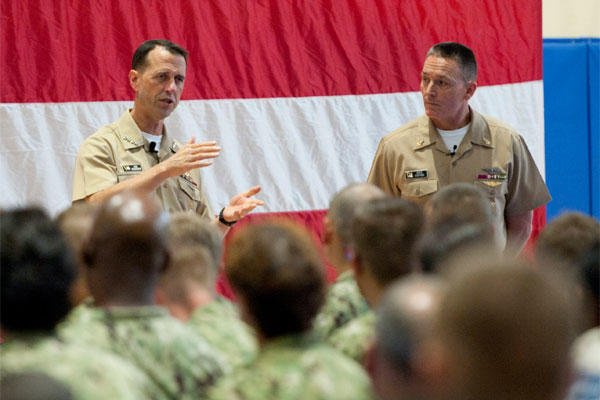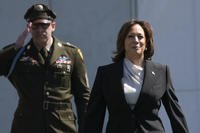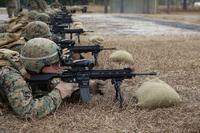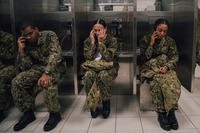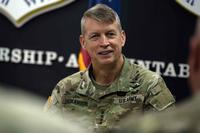The U.S. Navy must grapple with traditional competitors such as Russia and China alongside a growing range of other global threats, Chief of Naval Operations Adm. John Richardson said in a report released Tuesday.
The 10-page document, which follows the Maritime Strategy the Navy released last March, details the rapidly changing security environment, the advent of game-changing technologies such as 3-D printing and artificial intelligence, and the way commands across the fleet can work to ensure the service is prepared for future missions.
"Based on the current strategic environment, our Navy is at risk of failing to achieve its potential," said a senior Navy official, who requested anonymity in order to discuss the campaign design freely. "If we focus solely on our competitors ... we miss responding to broader forces that are driving fundamental shifts in the security environment. Focusing on the impact of those forces, that's kind of the overarching focus on this."
In the document, Richardson points to three global forces that are changing the way the Navy does business: bustling shipping traffic on oceans, seas and waterways, including new trade routes in the Arctic; the rise of the global information system, empowering anyone with a computer and accelerating the rate of change in all fields; and the increasing creation and adoption of technologies, from robotics to genetic science.
"We must do everything we can to seize the potential afforded by this environment," Richardson wrote. "Our competitors are moving quickly, and our adversaries are bent on leaving us swirling in their wake."
Those competitors and adversaries include an increasingly powerful Russia and China as well as nations with developing nuclear and missile programs, including North Korea and Iran, Richardson said.
And all these challenges come against a backdrop of constrained resources and limited budgets.
"We will not be able to 'buy' our way out of the challenges that we face," he said.
Richardson called for efforts designed to strengthen naval projected power and internal cohesion, strengthen relationships with other services and partner agencies, and promote "high velocity learning" to adapt to new technologies and challenges. Among the action points laid out under those lines of effort was expanding the Navy's use of simulators, online gaming and analytics to develop more creativity and operational agility.
Richardson also called for the acceleration of an initially called "Sailor 2025," the Navy's plan to modernize its personnel structure and career paths, particularly by using information technology to update its personnel system and training.
To strengthen naval power, Richardson instructs units to explore alternative fleet designs, including manned and unmanned systems and kinetic and non-kinetic payloads.
"For the last two decades, we've kind of deployed our forces the same way," the Navy official told Military.com. "What [Richardson] is challenging is, 'Hey, do we have this right? Let's think about it. Given the fact that the maritime environment continues to be contested, are we positioned to deal with threats and adversaries in the future?"
The official said these action points represent opportunities for commanders across the fleet to find solutions, rather than a top-down effort to create change.
"The tasks underneath each of the lines of effort are going to be our way of grading ourselves and we're going to do that at each opportunity," the official said. "Each unit commander is going to create his own unit tasks."
The goals will also be discussed during the CNO's twice-yearly meetings with flag officers, the official said. Richardson is expected to discuss his campaign design in greater detail during appearances at the National Press Club and the Surface Navy Association's national symposium next week.
-- Hope Hodge Seck can be reached at hope.seck@monster.com. Follow her on Twitter at @HopeSeck.
